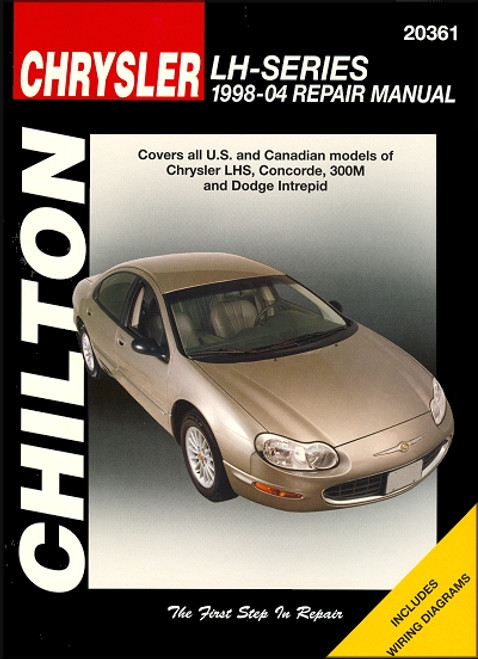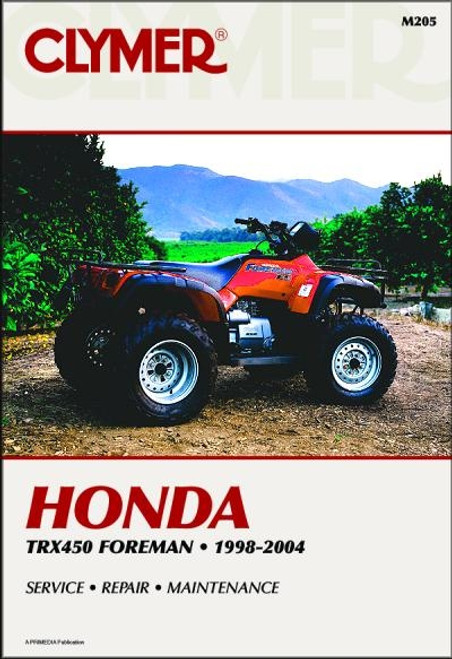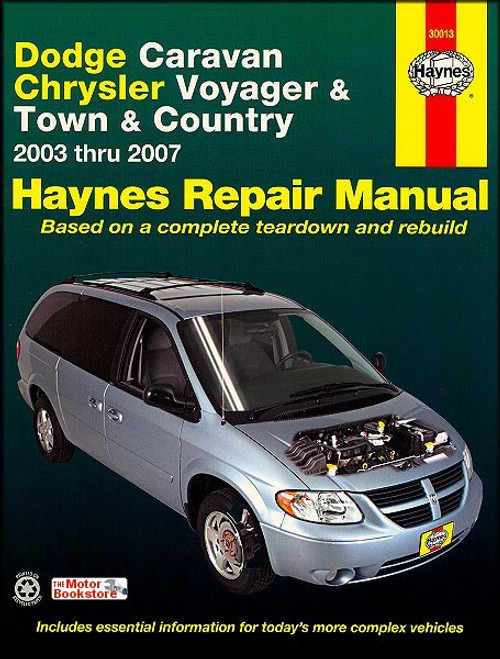The 1998-2004 Chrysler LHS, Concorde, 300M, Dodge Intrepid Repair Manual by Chilton is intended for DIY mechanics who want to service or fix their own vehicles. Second Generation (98-04) Chrysler LH cars were available as LHS, Concorde and 300M editions, as well as 4-door Dodge Intrepid models. Power is provided by a V6 engine coupled to a four-speed automatic transmission.
Book Excerpt: 1998-2004 Dodge Intrepid, Chrysler LHS/Concorde/300M Repair Manual GENERAL ENGINE OVERHAUL PROCEDURES
BODY
Subject: 1998, 1999, 2000, 2001, 2002, 2003, 2004 Chrysler LHS, Concorde, 300M, Dodge Intrepid service, maintenance, repair. ISBN-10: 1563927330 | ISBN-13: 9781563927331 | Chilton 20361
Book Excerpt: 1998-2004 Dodge Intrepid, Chrysler LHS/Concorde/300M Repair Manual GENERAL ENGINE OVERHAUL PROCEDURES
PISTONS/CONNECTING RODS | REMOVAL
(Refer to illustrations 13.1, 13.3 and 13.6) NOTE: Prior to removing the piston/connecting rod assemblies, remove the cylinder heads, the oil pan and the oil pump pick-up by referring to the appropriate Sections in Chapter 2A or 2B, if not already removed.
- Use your fingernail to feel if a ridge has formed at the upper limit of ring travel (about 1/4-inch down from the top of each cylinder). If carbon deposits or cylinder wear have produced ridges, they must be completely removed with a special tool (see illustration). Follow the manufacturer's instructions provided with the tool. Failure to remove the ridges before attempting to remove the piston/connecting rod assemblies may result in piston breakage.
- After the cylinder ridges have been removed, turn the engine upside-down so the crankshaft is facing up and remove the windage tray.
- Before the connecting rods are removed, check the side clearance (endplay) with feeler gauges. Slide them between the first connecting rod and the crankshaft throw until the play is removed (see illustration). The side clearance is equal to the thickness of the feeler gauge(s). If the side clearance exceeds the service limit, new connecting rods will be machined to restore it - consult an automotive machine shop for advice if necessary). Repeat the procedure for the remaining connecting rods.
- Check the connecting rods and caps for identification marks. If they aren't plainly marked, use a small center punch to make the appropriate number of indentations on each rod and cap (1,2,3 etc.).
- Loosen each of the connecting rod cap nuts 1/2-turn at a time until they can be removed by hand. Remove the number one connecting rod cap and bearing insert. Don't drop the bearing insert out of the cap.
- Slip a short length of plastic or rubber hose over each connecting rod cap bolt to protect the crankshaft journal and cylinder wall as the piston is removed (see illustration).
- Remove the bearing insert and push the connecting rod/piston assembly out through the top of the engine. Use a wooden hammer handle to push on the upper bearing surface in the connecting rod. If resistance if felt, double-check to make sure that all of the ridge was removed from the cylinder.
- Repeat the procedure for the remaining cylinders.
BODY
COWL COVER AND STRUT SUPPORT | REMOVAL AND INSTALLATION COWL COVER
(Refer to illustrations 14.2a and 14.2b)
- Open the hood, then refer to Chapter 12 and remove the wiper arms.
- Remove the Torx screws securing the two halves of the cowl cover to the cowl (see illustrations).
- Remove the cowl cover.
- Installation is the reverse of removal.
Subject: 1998, 1999, 2000, 2001, 2002, 2003, 2004 Chrysler LHS, Concorde, 300M, Dodge Intrepid service, maintenance, repair. ISBN-10: 1563927330 | ISBN-13: 9781563927331 | Chilton 20361
TABLE of CONTENTS:
Introduction: About this manual | Introduction | Vehicle identification numbers | Maintenance techniques, tools and working facilities | Buying parts | Jacking and towing | Anti-theft audio system | Booster battery (jump) starting | Conversion factors | Automotive chemicals and lubricants | Safety first! | Troubleshooting
- Tune-up and routine maintenance
- 2.7L V6 engine
- 3.2L and 3.5L V6 engines
- General engine overhaul procedures
- Cooling, heating and air-conditioning systems
- Fuel and exhaust systems
- Engine electrical systems
- Emissions and engine control systems
- 4-speed automatic transaxle
- Driveaxles
- Brakes
- Suspension and steering systems
- Body
- Chassis electrical system
- Wiring diagrams










